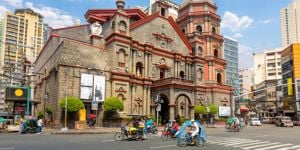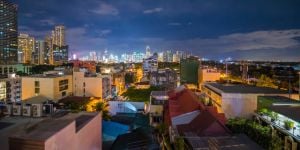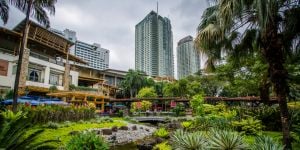
In May 2023, when the World Health Organisation chief declared an end to COVID-19 as a public health emergency, the Philippines followed suit. Like many Asian countries, the Philippines has now reopened its borders. The Philippines is in a reset and rebuild mode in all industries and the country is looking much more optimistic and positive for the future.
If you are interested in relocating there, here's what you need to know in terms of entry requirements post COVID-19, employment, cost of living, housing, etc.
What are the current regulations for entering the Philippines?
There is no more quarantine or Covid-19 testing to enter the Philippines for fully vaccinated travelers, provided they meet the following requirements to travel to the Philippines:
Travelers must have proof of full vaccination against Covid-19. Accepted proof of vaccination includes any of the following documents:
- WHO (World Health Organization) International Certificate of Vaccination and Prophylaxis
- VaxCertPH
- National or State digital certificate of the country/foreign government which has accepted VaxCertPH under a reciprocal arrangement
- Other proof of vaccination permitted by the IATF (Inter-Agency Task Force for the Management of emerging infectious diseases in the Philippines)
No guidelines have been given regarding Covid-19 booster shots or the expiration of vaccinations.
For non-vaccinated or partially vaccinated travelers:
An official and certified Covid-19 test (RT-PCR or RAT) performed by a medical facility or lab within 24h before departure is required.
Children below 15 years old are exempt from this requirement but need to be accompanied by a legal guardian meeting all entry requirements. Should the legal guardian not be fully vaccinated for Covid-19 or test positive upon arrival, the child below 15 years old will need to follow the same quarantine processes as their legal guardian.
Are masks still mandatory in the Philippines?
Since October 2022, masks are not mandatory in the Philippines except in healthcare facilities, certain Government offices and public transportation. Wearing a face mask in other settings is voluntary, although many Filipinos continue wearing face masks both indoors and outdoors.
Is it easy to find work in the Philippines following the COVID-19 crisis?
The Philippines economy has shown strong growth momentum during 2022, with GDP growth rising to 7.6% y/y in the third quarter of 2022. The easing of domestic COVID-19 restrictions during 2022 has allowed the rebound of household consumption spending, which helped to drive strong economic growth. With this exponential growth, there are many avenues for expat investors to explore.
The Philippines does, however, have strict labor laws for foreign workers. All foreign nationals who intend to work in the Philippines are still required by the government to secure an AEP from the Department of Labor and Employment (DOLE). This permit authorizes a foreign national to engage in gainful activities provided that no domestic manpower is available for the particular designation.
How is the real estate market following the crisis in the Philippines?
From an 8-percent inflation rate recorded in November 2022, it increased to 8.1 percent in December of the same year. The Philippine real estate market is reported to remain strong, particularly in the residential sector.
The Philippines is a good place to invest in real estate, especially given how profitable and booming the industry is. Furthermore, real estate investments are a great strategy to increase wealth due to the nation's strong economy and ongoing growth.
Has the cost of living changed since the COVID-19 crisis in the Philippines?
Like in most countries, there has been an increase in the cost of living, and the Philippines is no exception. Although comparatively cheaper than the West, the Philippines is now one of the most expensive countries to live in Southeast Asia. The average monthly cost for a single person is around $500, while for a family of four, it is roughly around $2,000.
How about lifestyle? Have there been major changes in habits following the pandemic?
Apart from the visible signs of mask-wearing, the Philippines is now more or less back to normal. However, with the rising food and fuel costs, people are opting more and more to eat in rather than ‘eat out'.
Travel within the Philippines is still hugely popular across the 82 provinces. Most Filipinos no longer consider COVID-19 as a relevant concern when traveling. Two years ago, this was a main issue worldwide, and therefore the priority was choosing a Covid-safe destination. Since these concerns are now in the past, the tourism sector has achieved and surpassed the pre-pandemic levels.
Useful link:
We do our best to provide accurate and up to date information. However, if you have noticed any inaccuracies in this article, please let us know in the comments section below.











